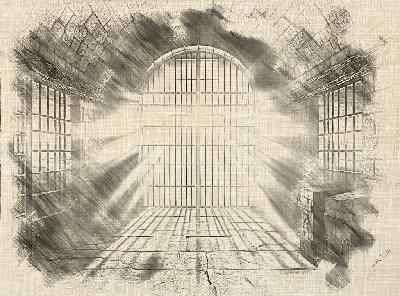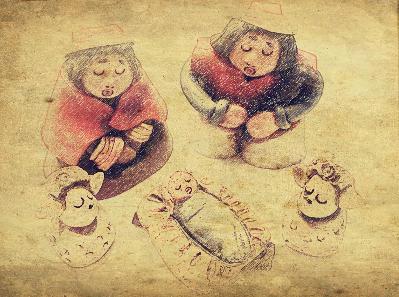The Profound Message of ‘Hark! The Herald Angels Sing’
Description
In the quiet corners of our souls, where the echoes of eternity resound, there lies a hymn so profound, so transformative, that it has become a cornerstone of Christian worship. “Hark! The Herald Angels Sing,” penned by the prolific hymnwriter Charles Wesley, is not merely a song; it is a theological treatise, a spiritual journey, and a testament to the redemptive power of art.
Let us pause, dear seeker, and allow the weight of this hymn’s history to settle upon our hearts like the gentle snow of a Christmas morn. Charles Wesley, brother to the renowned John Wesley and co-founder of Methodism, crafted this masterpiece within the first year of his conversion. Can you imagine, beloved, the fervor of a newly awakened soul, the passion of a heart freshly touched by divine grace? It was in this crucible of spiritual rebirth that “Hark! The Herald Angels Sing” was forged.
Originally titled “A Hymn For Christmas Day,” this composition stands as a testament to the transformative power of God’s love. Yet, in a twist of divine irony, the melody that would eventually carry these sacred words was initially deemed too secular for such a holy purpose. Oh, how often do we, in our limited wisdom, draw lines between the sacred and the secular, forgetting that all creation sings the glory of its Creator? Wesley, in an act of holy audacity, redeemed this secular tune, weaving it into the fabric of sacred music and reminding us that God’s redemptive work extends to every corner of His creation.
Consider, if you will, the profound symbolism in this act. Just as Christ came to redeem humanity, bridging the chasm between the divine and the mundane, so too did Wesley’s hymn bridge the gap between sacred and secular music. Is this not a reflection of our very calling as believers? To be in the world but not of it, to transform rather than withdraw, to redeem rather than condemn?
As we delve deeper into the rich tapestry of this hymn, let us first consider the opening lines, which underwent a significant transformation. George Whitefield, a contemporary of Wesley and a powerful preacher in his own right, altered the first line from “Hark, how all the welkin rings, Glory to the King of Kings” to the now-familiar “Hark! The Herald Angels Sing.” This change, seemingly small, carries with it profound implications.
The original line, with its use of the archaic term “welkin” (meaning the vault of heaven), painted a picture of all creation resounding with praise. It was a cosmic declaration of Christ’s kingship. Yet, Whitefield’s alteration brings us to a more intimate scene – the angelic announcement to the shepherds on that holy night. Both versions speak truth, but in different keys. One proclaims the universal reign of Christ, while the other invites us into the personal, historical moment of His birth.
Is this not reflective of our own spiritual journeys? At times, we are called to stand in awe of the cosmic Christ, the Lord of all creation. At other times, we are drawn into the intimate reality of Emmanuel, God with us. Both perspectives are vital to a full understanding of who Christ is and what His incarnation means for humanity.
As we turn our gaze to the lyrics themselves, we find a theological feast spread before us. Each verse is laden with profound truths, inviting us to partake of the rich banquet of God’s redemptive plan. Let us savor each morsel, allowing its flavor to permeate our souls.
“Hark! the herald angels sing, ‘Glory to the newborn King. Peace on earth and mercy mild, God and sinners reconciled!'”
In these opening lines, we are confronted with the central miracle of Christmas – the reconciliation between God and sinners. Ponder this, beloved. The infinite gap between holy God and fallen humanity, a chasm wider than the universe itself, bridged by a baby in a manger. Is this not the very essence of grace? That God Himself would traverse the infinite to reach the finite, that Eternity would step into time, that the Creator would become the created – all for the sake of reconciliation.
The phrase “Peace on earth” echoes the angelic proclamation in Luke’s gospel, but Wesley takes it a step further. This is not merely an absence of conflict, but a profound peace that flows from reconciliation with God. It is a peace that surpasses understanding, a peace that the world cannot give or take away. In a world torn by strife and division, do we not long for such peace? And yet, how often do we seek it in all the wrong places, in temporal pleasures or worldly success, forgetting that true peace can only come from being reconciled to our Creator?
“Joyful, all ye nations, rise; join the triumph of the skies; with th’angelic hosts proclaim, ‘Christ is born in Bethlehem!'”
Here, Wesley expands the scope of celebration beyond the humble fields of Bethlehem to encompass all nations. This is not a parochial event, but a cosmic one. The birth of Christ is not merely good news for a select few, but for all peoples, all nations. It is a triumphant declaration that God’s redemptive plan knows no borders, no racial or ethnic boundaries.
But notice, dear one, the invitation embedded in these lines. We are called to “join the triumph of the skies,” to add our voices to the angelic chorus. This is not a spectator sport; we are participants in this cosmic celebration. How often do we stand silent, when we should be shouting from the rooftops the good news of Christ’s birth? How often do we allow the cares of this world to mute our praise, when we should be joining our voices with the hosts of heaven?
As we move to the second verse, we encounter some of the most profound Christology in hymnody:
“Christ by highest heav’n adored, Christ, the everlasting Lord, late in time behold Him come, offspring of the virgin’s womb. Veiled in flesh the Godhead see; hail the incarnate Deity, pleased as man with men to dwell, Jesus, our Emmanuel.”
In these lines, Wesley masterfully weaves together the divinity and humanity of Christ. He is at once the “everlasting Lord,” adored by the highest heaven, and the “offspring of the virgin’s womb.” The eternal Word, through whom all things were made, has entered His own creation as a helpless babe. Can you fathom the magnitude of this truth? The One who spoke galaxies into existence now coos in a manger. The hands that flung stars into space now curl around Mary’s finger.
The phrase “Veiled in flesh the Godhead see” is particularly striking. It speaks to the mystery of the incarnation, the divine clothed in humanity. Like Moses, who could not look directly upon God’s glory but had to view Him through the cleft of a rock, we now see God’s glory veiled in human flesh. Yet, this veiling is not a diminishment of His glory, but rather its fullest expression. For in Christ, we see the full revelation of God’s character – His love, His justice, His mercy, all perfectly displayed in human form.
“Pleased as man with men to dwell, Jesus, our Emmanuel.” Here, Wesley reminds us of the staggering truth that God not only became man but was pleased to do so. The incarnation was not a reluctant concession, but a joyful condescension. Christ did not come grudgingly, but willingly, motivated by a love so vast that it compelled Him to bridge the infinite gap between divinity and humanity.
As we move to the third verse, we see Wesley’s hymn expanding beyond the nativity to encompass the full scope of Christ’s redemptive work:
“Hail the heav’n-born Prince of Peace! Hail the Sun of Righteousness! Light and life to all He brings, ris’n with healing in His wings. Mild He lays His glory by, born that we no more may die, born to raise the sons of earth, born to give them second birth.”
Here, we move from the manger to the cross and the empty tomb. Christ is hailed as the “Prince of Peace,” echoing Isaiah’s messianic prophecy. He is the “Sun of Righteousness,” a reference to Malachi 4:2, which speaks of healing in His wings. In these lines, Wesley reminds us that the purpose of Christ’s birth was His death and resurrection. He was “born that we no more may die,” a profound statement of the substitutionary nature of Christ’s sacrifice.
The phrase “born to give them second birth” speaks to the transformative power of Christ’s work. Through His death and resurrection, we are offered not merely a modification of our old nature, but a complete rebirth. We are new creations in Christ, born again of imperishable seed. How often do we live as if this were not true? How often do we cling to our old nature, our old habits, our old sins, when we have been given the power to live as new creations?
The final verse, often omitted in modern renditions, is a powerful prayer:
“Come, Desire of nations, come, fix in us Thy humble home; rise, the woman’s conqu’ring Seed, bruise in us the serpent’s head. Adam’s likeness now efface, stamp Thine image in its place; Second Adam from above, Reinstate us in Thy love.”
Here, Wesley draws on rich biblical imagery. Christ is addressed as the “Desire of nations,” a reference to Haggai 2:7, pointing to Him as the fulfillment of all human longing. The “woman’s conqu’ring Seed” hearkens back to the protoevangelium in Genesis 3:15 , where God promises that the seed of the woman will crush the serpent’s head.
The plea to “Adam’s likeness now efface, stamp Thine image in its place” is a profound theological statement. In Adam, the image of God in humanity was marred by sin. In Christ, the Second Adam, that image is restored. We are not merely forgiven, but transformed, remade in the image of Christ.
As we reflect on this magnificent hymn, let us consider its implications for our lives today. “Hark! The Herald Angels Sing” is not merely a quaint Christmas carol, b
























